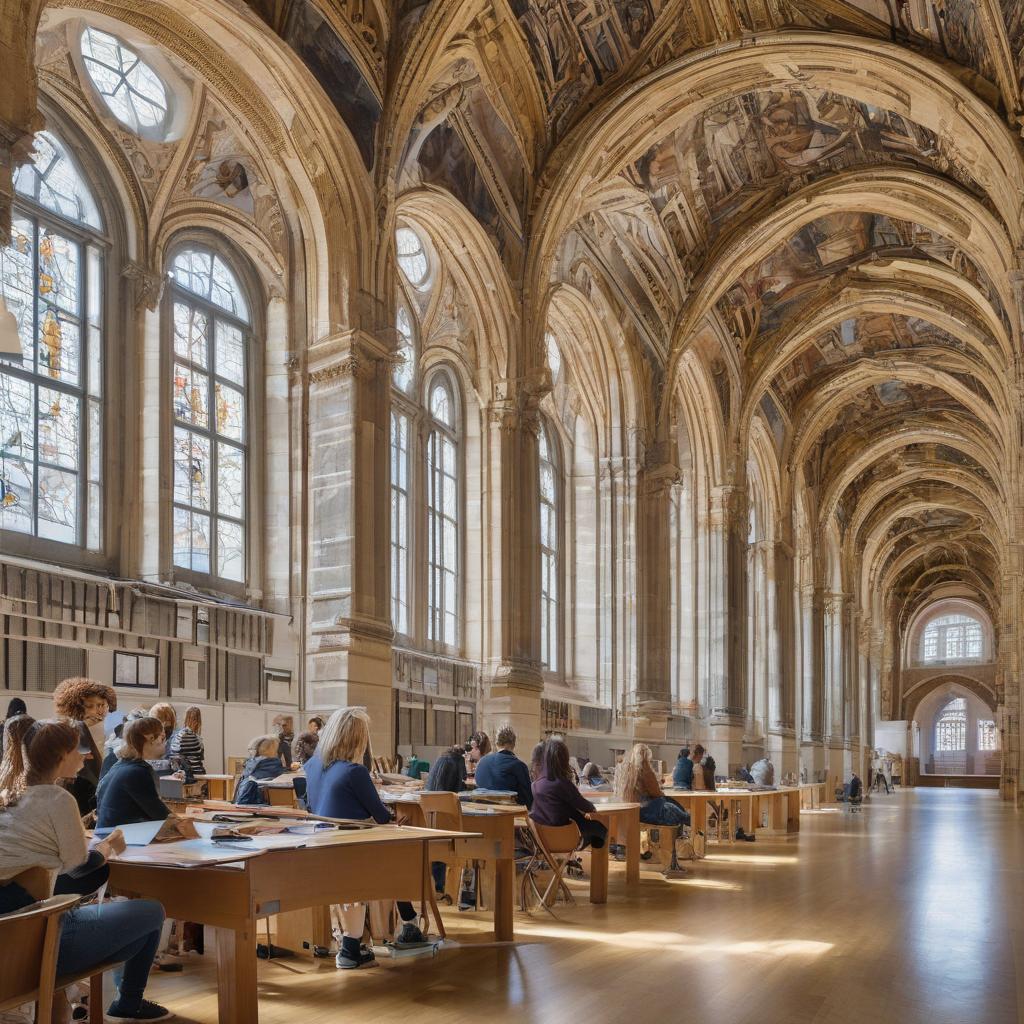European universities are not just centers of academic learning—they are also vibrant hubs of creativity, innovation, and artistic expression. In this article, we’ll dive into the world of cultural and artistic initiatives within European universities, exploring the diverse range of activities, events, and programs that enrich campus life and foster a thriving arts community.
The Role of Arts and Culture in Higher Education
Beyond Academics
While the primary focus of universities is often on academic pursuits, the importance of arts and culture in higher education should not be underestimated. Arts and culture play a crucial role in fostering creativity, critical thinking, and empathy among students, preparing them to navigate the complexities of the modern world and become well-rounded individuals.
Enhancing Campus Life
Cultural and artistic initiatives contribute to the vibrant campus life and sense of community within European universities. From art exhibitions and theater productions to music concerts and literary festivals, these initiatives provide students, faculty, and staff with opportunities to engage with diverse forms of artistic expression, connect with peers who share similar interests, and explore new perspectives and ideas.
Diversity of Initiatives
Visual Arts
Many European universities boast world-class art galleries and exhibition spaces that showcase the work of both emerging and established artists. These galleries not only provide a platform for students and faculty to exhibit their artwork but also serve as cultural hubs that attract visitors from the local community and beyond. Additionally, universities often organize artist talks, workshops, and residencies to foster dialogue and collaboration among artists, scholars, and the public.
Performing Arts
The performing arts also thrive within European universities, with theater productions, dance performances, and musical concerts held regularly on campus. Student-led theater groups, dance troupes, and orchestras provide opportunities for students to hone their craft, express themselves creatively, and showcase their talents to a wider audience. Moreover, universities often invite renowned artists, musicians, and theater companies to perform on campus, exposing students to a diverse range of artistic experiences and inspiring them to pursue their passions.
Impact on Personal and Professional Development
Creative Expression
Participating in cultural and artistic initiatives can have a profound impact on students’ personal and professional development. Engaging in creative expression through painting, writing, acting, or music can be a powerful form of self-expression and self-discovery, helping students explore their identities, passions, and aspirations. Moreover, involvement in artistic endeavors fosters collaboration, communication, and teamwork skills, which are valuable in both academic and professional settings.
Building Communities
Cultural and artistic initiatives also play a vital role in building communities and fostering social connections within universities. By bringing students, faculty, and staff together through shared cultural experiences, these initiatives create opportunities for meaningful interactions, cross-cultural dialogue, and mutual understanding. Whether it’s attending a poetry reading, participating in a dance workshop, or volunteering at a community arts event, students form bonds and forge friendships that transcend disciplinary boundaries and enrich their university experience.
Challenges and Opportunities
Funding and Support
Despite the numerous benefits of cultural and artistic initiatives, universities often face challenges in securing funding and support for these programs. Limited resources, competing priorities, and administrative hurdles can hinder the development and sustainability of arts and culture initiatives on campus. However, universities also have an opportunity to leverage external partnerships, philanthropic support, and alumni engagement to enhance funding and support for cultural and artistic initiatives.
Diversity and Inclusion
Another challenge is ensuring that cultural and artistic initiatives are inclusive and accessible to all members of the university community. Universities must strive to create a welcoming and inclusive environment where students from diverse backgrounds feel empowered to participate in and contribute to cultural and artistic activities. This requires proactive efforts to address barriers to participation, promote diversity and representation in programming, and ensure that cultural and artistic initiatives reflect the rich diversity of the university community.
Future Directions
Innovation and Collaboration
Looking ahead, the future of cultural and artistic initiatives within European universities is bright, with opportunities for innovation and collaboration abound. Universities can harness emerging technologies, digital platforms, and interdisciplinary collaborations to expand access to cultural and artistic experiences, reach new audiences, and foster creativity and innovation. By embracing a culture of experimentation, risk-taking, and collaboration, European universities can continue to enrich campus life, nurture talent, and cultivate a thriving arts community that inspires, educates, and transforms lives.


